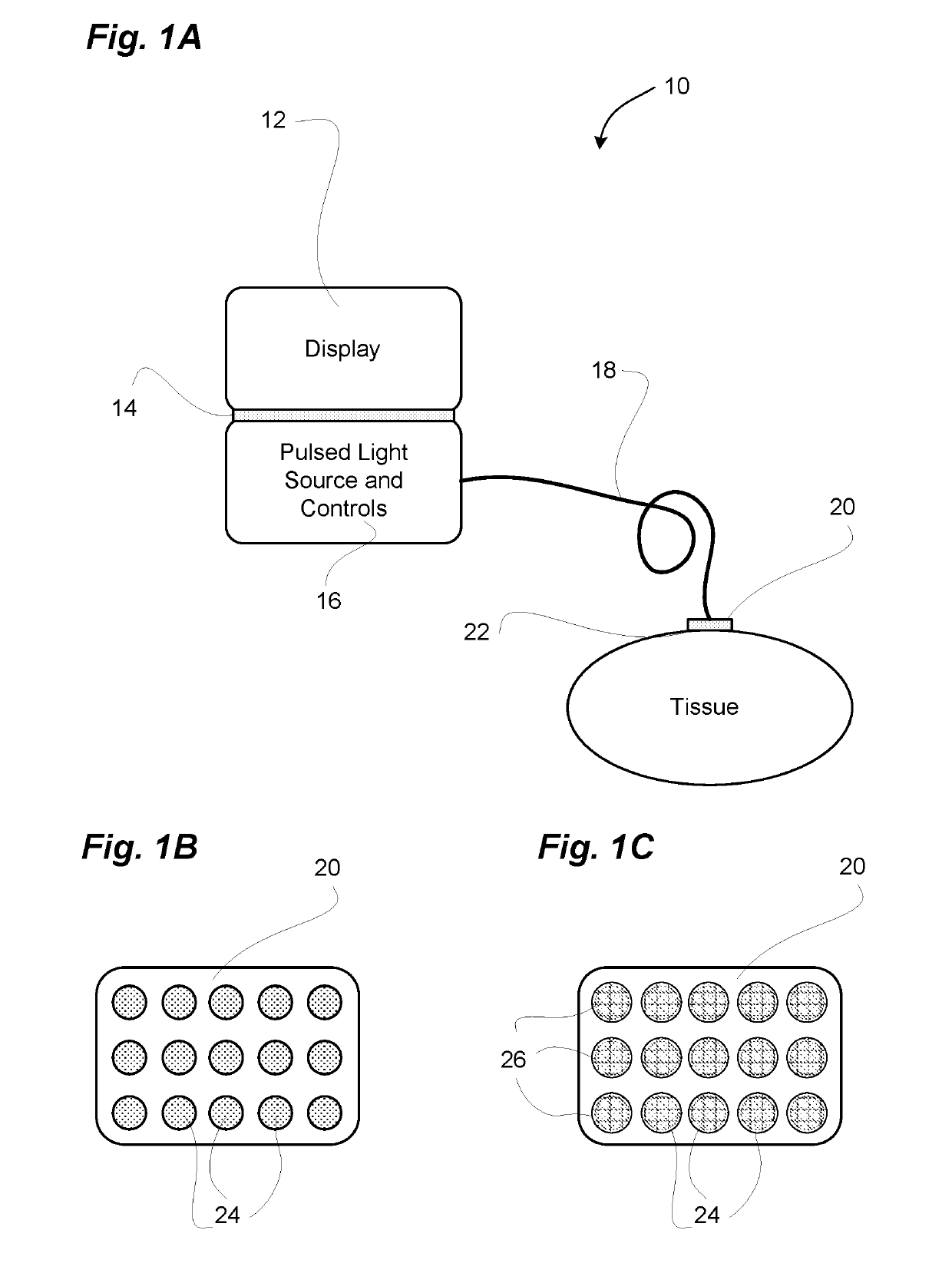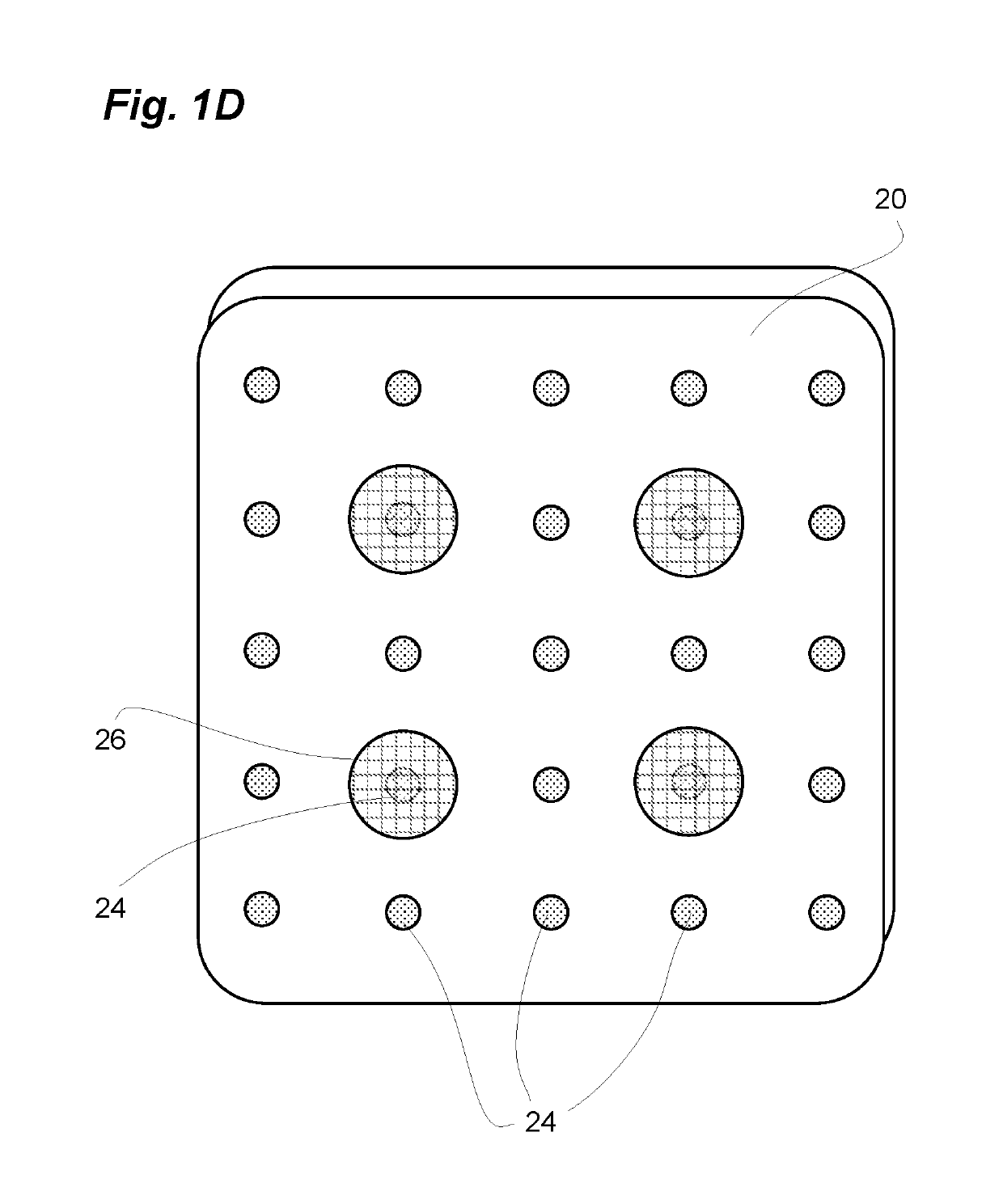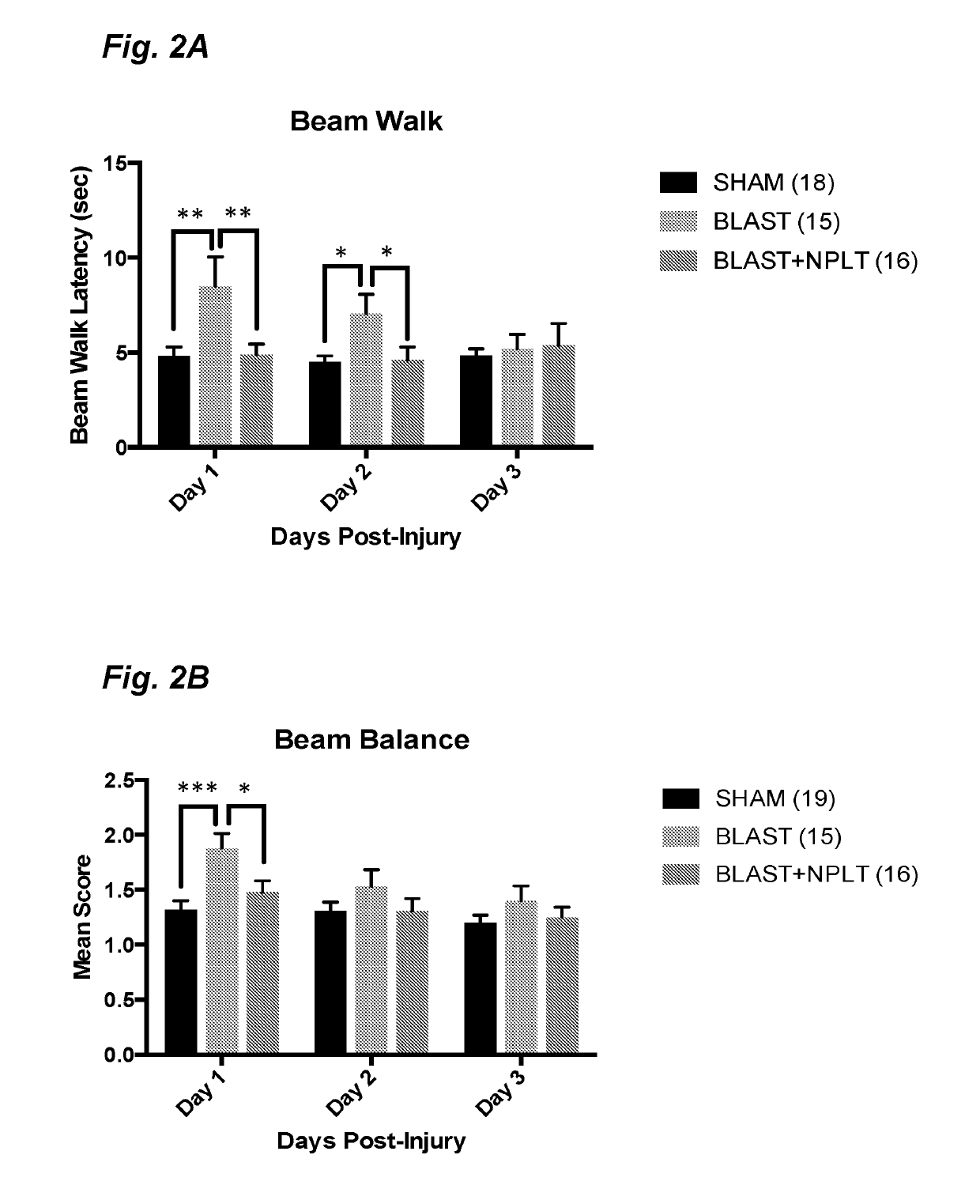Nanopulse light therapy
a technology of light pulses and pulses, applied in the field of tissue injury treatment using light pulses, can solve the problems of loss of productivity, lack of non-invasive therapies, and nearly 50 billion dollars in medical expenses, and achieve the effect of without tissue damag
- Summary
- Abstract
- Description
- Claims
- Application Information
AI Technical Summary
Benefits of technology
Problems solved by technology
Method used
Image
Examples
example 1
EXAMPLE 1
Cognitive and Motor Function Testing
[0101]In one embodiment, in order to test the effect of NPLT on TBI-induced vestibulomotor and cognitive dysfunctions, rats were subjected to beam walk and beam balance tests on post injury days (PIDs) 1-3 and on the working memory paradigm of the Morris water test on PIDs 6-10 and PIDs 11-15.
[0102]Male Sprague-Dawley rats (300-350 g) were subjected to blast-induced neurotrauma using a Vandenberg device that produces a combined blast over / underpressure that is followed by a blunt impact caused by the venting gas jet or to fluid percussion injury. One hour later the subjects were treated with NPLT for 5 minutes. In one embodiment, the NPLT treatment utilized a tunable optical parametric oscillator that generated nanosecond pulses in the near infra-red spectral range (from 680 to 950 nm) energy of up to 15 mJ, with duration of 7 ns, repetition rate of 20 Hz, producing low-level, wide-band, MHz optoacoustic (ultrasound) waves.
[0103]In anothe...
example 2
EXAMPLE 2
Working Memory Testing
[0107]The Morris Water Maze (MWM) was used to assess working memory, as described in detail by Sell et al. (Sell, SL, et al. Persistent Behavioral Deficits in Rats after Parasagittal Fluid Percussion Injury. J Neurotrauma 34 (2017) 1086-1096). Briefly, the experimental animals were placed in a tank filled with water to a level that was 2 cm higher than a hidden platform. Rats were assigned four starting points and four platform locations in a balanced order to avoid starting points too close to the platform. For Trial 1, rats were placed in the tank and allowed 120 seconds to find the platform. Once on the platform, the rats were allowed 15 seconds to rest and then were placed in the tank again from the same starting point to begin Trial 2. They were again allowed 120 seconds to find the platform. Rats were rested 4 min in a heated enclosure before starting a second pair of trials which used different platform and starting locations. Rats received four...
example 3
EXAMPLE 3
[0109]Laser Capture Microdissection (“LCM”) was utilized to prepare samples for analysis of mRNA expression. At the appropriate time, rats were euthanized and the brains were dissected out, rapidly frozen in dry ice, and stored at −80° C. To prepare for cryo-sectioning, tissues were frozen in OCT mounting medium, 10 μm coronal brain sections were cut on a cryostat (Leica Microsystems CM1850), and mounted on superfrost clean glass slides. Sections were stained with 0.001% Fluoro-Jade (Histo-Chem, Inc, Jefferson, Ark.), a marker for neuronal injury, and counterstained with 1% cresyl violet (a Nissl stain). All solutions were prepared with RNase-free water, and the cresyl violet and the Fluoro-Jade (FJ) were sterile filtered immediately before use.
[0110]LCM was performed using a PixCell IIe laser capture microscope with an infrared diode laser (Arcturus Engineering, presently Arcturus / LifeTechnologies / Thermo-Scientific, Carlsbad, Calif.). The smallest laser spo...
PUM
 Login to View More
Login to View More Abstract
Description
Claims
Application Information
 Login to View More
Login to View More - R&D
- Intellectual Property
- Life Sciences
- Materials
- Tech Scout
- Unparalleled Data Quality
- Higher Quality Content
- 60% Fewer Hallucinations
Browse by: Latest US Patents, China's latest patents, Technical Efficacy Thesaurus, Application Domain, Technology Topic, Popular Technical Reports.
© 2025 PatSnap. All rights reserved.Legal|Privacy policy|Modern Slavery Act Transparency Statement|Sitemap|About US| Contact US: help@patsnap.com



